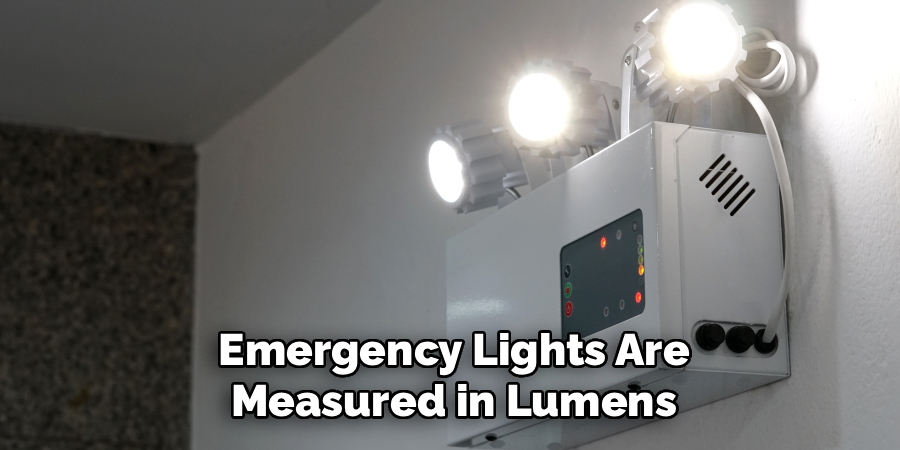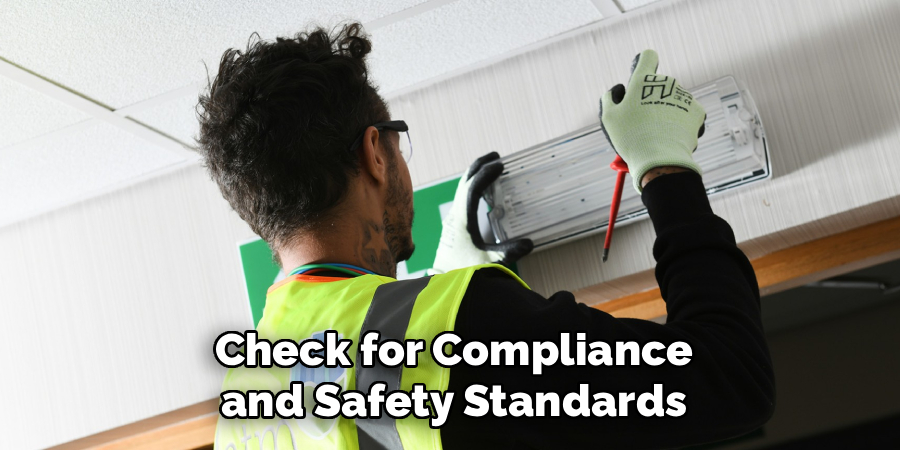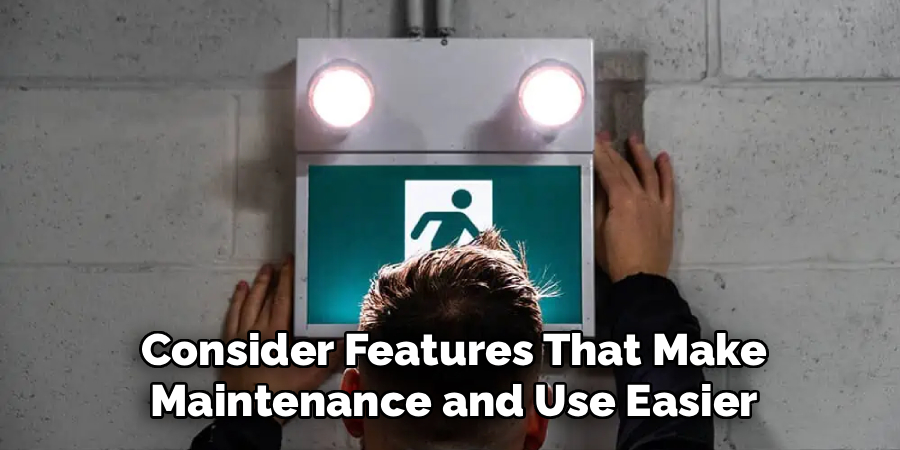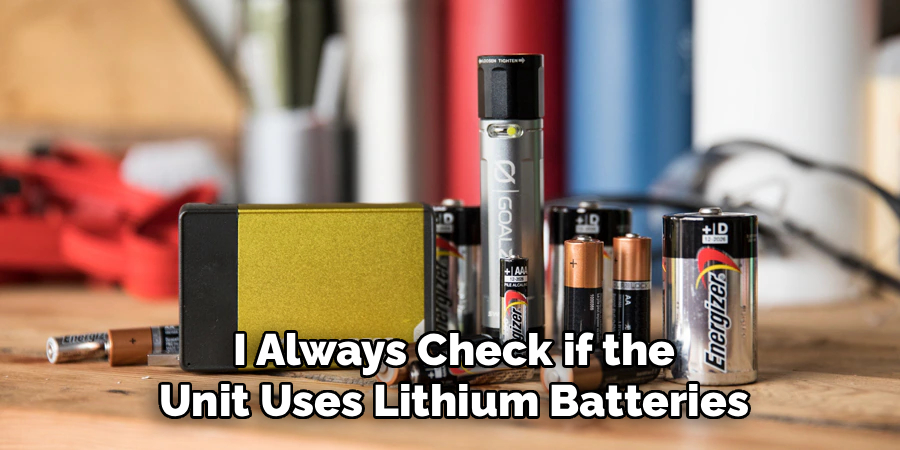When the power goes out, most of us scramble for candles, flashlights, or even our phone screens to light the way. But relying on those is risky, inconvenient, and in some cases, downright unsafe.

That’s where emergency lights come in. They aren’t just about keeping the lights on when everything else goes dark—they’re about safety, compliance with building codes, and giving you peace of mind. In the United States, power outages can happen for many reasons: severe thunderstorms in the Midwest, hurricanes in Florida, earthquakes in California, or even winter ice storms in the Northeast.
Having reliable emergency lighting is not just about convenience—it can save lives in critical situations and is legally required in many commercial spaces. This guide will walk you through how to choose the right emergency light, compare the most common types, and give you a step-by-step process to ensure you make the right choice for your home, office, or business.
Understanding Emergency Lights
At its core, an emergency light is a lighting fixture that automatically turns on when the main power supply fails. These lights are designed to help people safely exit a building during a power outage or navigate around their homes when everything goes dark.
In the US, emergency lights play a dual role. For businesses, they’re required under OSHA (Occupational Safety and Health Administration) and NFPA (National Fire Protection Association) standards. For homeowners, they’re a smart investment in safety and comfort. Common household uses include staircases, hallways, garages, and basements—areas where tripping hazards are most likely.
It’s also worth noting the difference between standard emergency lights, exit signs, and combination units. Emergency lights provide illumination only, exit signs guide people to exits, and combination units do both. Choosing the right type depends on whether you’re outfitting a commercial property or just trying to keep your family safe at home.
Key Factors to Consider Before Buying
Choosing the right emergency light comes down to understanding your needs and matching them with the right features. Location of use is the first factor. For homes, portable or wall-mounted LED units usually work well. Businesses often require hardwired, wall-mounted models, while outdoor areas like garages or parking lots need weatherproof designs.
Next, consider brightness and coverage. Emergency lights are measured in lumens. Around 100–200 lumens is enough for small hallways, but larger spaces such as stairwells or warehouses may need 400 lumens or more to ensure safe movement.

Battery backup is also critical. US standards require at least 90 minutes of runtime. Lithium-ion batteries are lighter, last longer, and are ideal for homes, while lead-acid batteries cost less but are bulkier. Look at power sources as well—options include hardwired, plug-in rechargeable, solar-powered, and even hybrid models, which are handy in areas with frequent outages.
For businesses, compliance with US safety standards is non-negotiable. UL 924 certification ensures reliability, and OSHA requires regular testing. Finally, focus on design and build quality—choose durable, weatherproof, and impact-resistant units for tough environments.
Types of Emergency Lights in the USA
LED Emergency Lights
These are the most popular choices today. They’re energy-efficient, last longer, and require minimal maintenance.
Halogen Emergency Lights
Halogen lights are very bright but less energy-efficient and generate heat. They’re being phased out in many applications in favor of LEDs.
Exit Sign Combination Units
Perfect for restaurants, offices, or retail shops. They meet code by combining illuminated exit signage with emergency lighting.
Portable Emergency Lights and Lanterns
Great for households, camping trips, or keeping in your vehicle. They can be recharged and carried around as needed.
Solar-Powered Emergency Lights
Increasingly popular in areas with unreliable power grids. They charge during the day and provide reliable backup at night.
5 Steps Guide on How to Choose the Right Emergency Light

To make the decision easier, here’s a detailed five-step guide that walks you through the process.
Step 1: Identify Your Needs
The first step is to get clear about what you’re buying the emergency light for. A small apartment or single-family home doesn’t need the same type of lighting as a commercial property. For instance, if you only want something to light up a hallway or bedroom during a power outage, a simple plug-in rechargeable unit or portable LED lantern will do the trick.
On the other hand, if you own a warehouse, office building, or restaurant, you’ll need hardwired, wall-mounted LED emergency lights that provide enough coverage for larger spaces. Defining your needs upfront saves you from overspending on features you don’t need or underbuying for critical situations.
Step 2: Check for Compliance and Safety Standards
In the United States, businesses are required to follow specific regulations for emergency lighting. Look for products that are UL 924 certified, which means they meet federal safety requirements. Additionally, OSHA and NFPA guidelines ensure that lights are reliable in case of fire, power failure, or other emergencies.
Even if you’re buying for your home, choosing a certified model adds an extra layer of assurance that the light will perform when it matters most. It’s better to have peace of mind knowing your unit meets safety standards than to risk having it fail during an outage.
Step 3: Compare Battery Backup and Runtime
Battery backup is the lifeline of any emergency light. By standard, units should provide at least 90 minutes of illumination, which is enough time for evacuation in most scenarios. However, some models offer longer runtimes, which can be particularly useful in areas prone to extended outages.
Also, pay attention to battery type and availability. Lithium-ion batteries last longer and require less maintenance, while sealed lead-acid batteries are cheaper but heavier. Whichever you choose, make sure replacement batteries are easy to find in the US market—some imported models use batteries that are difficult or expensive to source.
Step 4: Evaluate Features and Build Quality
Not all emergency lights are created equal. Consider features that make maintenance and use easier, such as self-testing systems that automatically check battery and lamp functionality. Adjustable heads are another practical feature, allowing you to direct light exactly where it’s needed.
Build quality matters too—outdoor units should be weatherproof and impact-resistant to withstand rain, dust, and rough conditions. For long-term savings, LED-based units are the best choice, offering efficiency and durability.

Step 5: Set a Budget and Make the Purchase
Emergency lights come in a wide range of prices—from as low as $20 for simple plug-ins to $200 or more for heavy-duty, commercial-grade models. When setting your budget, think of emergency lights as a safety investment rather than just another expense.
The cheapest option may not last long or could fail at a critical moment. Instead, aim for a balance between affordability and reliability. In an emergency, you’ll want a unit you can count on, without second-guessing whether it will turn on when needed.
Common Mistakes to Avoid When Buying Emergency Lights
One of the biggest mistakes is choosing a light based purely on appearance. A sleek design won’t help if it doesn’t meet code or has poor runtime. Another pitfall is forgetting about local building codes—business owners can face fines for non-compliance.
Many people also buy cheap, uncertified products from unknown brands. While the upfront savings are tempting, these lights often fail when you need them most. Finally, don’t overlook battery replacement costs. Some models have expensive or hard-to-find batteries, which can be frustrating later.
Short Personal Tips
When I first bought an emergency light for my own apartment, I underestimated how quickly batteries wear out. Now, I always check if the unit uses lithium batteries, because they last longer and are easier to maintain.
In the Midwest, where storms knock out power often, I’ve found it useful to keep a portable LED lantern in my garage and another in my car. It’s saved me more than once when I got stuck outside during a blackout.
For my uncle’s small restaurant, compliance was tricky until we found a UL-listed combination unit that worked as both an exit sign and an emergency light. It saved space and solved two problems at once.
Best Practices for Installation and Maintenance
Installing hardwired emergency lights is not a DIY job. Always hire a licensed electrician, especially in commercial settings. Once installed, test your lights monthly by pressing the test button, and schedule a full inspection once a year.

Keep the light heads clean, as dust can reduce brightness. Replace batteries every 2–4 years, depending on type. If you choose LED units, you’ll likely get 8–10 years out of the bulbs before needing replacements.
Frequently Asked Questions
Q: What type of emergency light is best for home use in the USA?
Ans: Portable LED lanterns or plug-in rechargeable units are usually best for households.
Q: How long should an emergency light stay on during an outage?
Ans: By US standards, at least 90 minutes is required, though many models last longer.
Q: Do emergency lights need professional installation?
Ans: Hardwired units do. Portable or plug-in models can be installed without professional help.
Q: Are solar emergency lights reliable in the USA?
Ans: Yes. In states like Florida and Texas, where storms are common, solar models can be a dependable option.
Q: How often should I test my emergency lights?
Ans: Monthly, with at least one full test every year to ensure battery performance.
Conclusion
Choosing the right emergency light isn’t just about convenience—it’s about safety and compliance. For businesses, it can mean avoiding fines and ensuring customers and staff are protected. For homes, it brings peace of mind knowing your family won’t be left in the dark.
Think about where you’ll use the light, how bright it needs to be, and whether it complies with US standards. Prioritize durability and ease of maintenance. Most importantly, remember that the right emergency light is not just a purchase—it’s an investment in safety for your home or workplace.
